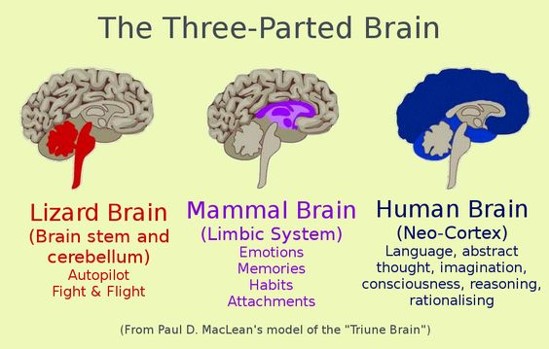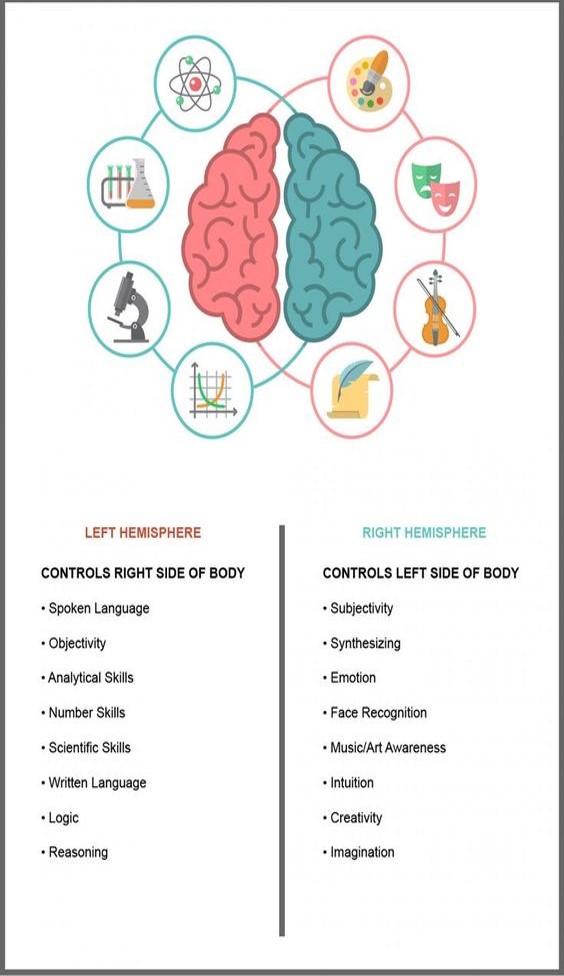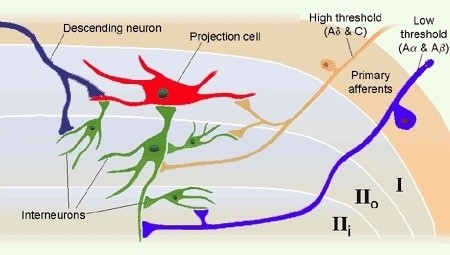behavioural
epigenetics

The author, Margaret Tyson, was an honorary researcher at the Institute of Cancer Sciences, The University of Manchester and now researches epigenetics particularly of cancer and schizophrenia. She also runs Manchester Amputee Fitnesss Initiative and Karen's Page.
 |
Schizophrenia (SC) and the evolution of the brain
The evolution of the brain has been proposed as being most primitively reptilian, then paleomammalian and most recently neomammalian. This was named as the Triune brain by Maclean (1) . The paleomammalian brain consists of the limbic system (see fig 3). These parts of the brain all have functions (fig 4). The prefrontal cortex, part of the "human brain", controls other parts through reasoning (fig 4).
Each part of the brain is important in regulating behaviour but heterogeneity can cause schizophreniform ideas and feelings (2) . Symptoms include: positive symptoms; such as hallucinations (auditory e.g. hearing voices; visual images) delusions, confused thoughts and behaviour and negative symptoms; for example, conversely, lack of emotions (3).
The limbic system and networks with other parts of the brain and the cerebral cortex appear to be altered in schizophrenia (4). Fig. 4 demonstrates (in comic form) that the amygdala, which deals with emotions, can become uncontrolled which may happen in schizophrenia.
Fig 3 The Tiune Brain quillette.com

n.b. Shows section of one hemisphere, the other is structurally similar but each hemisphere has its own characteristics (Fig 4)
Fig 4 Major Brain Functions momentousinstitute.org
Fig 5 Parts of the brain interactive 3D image
This image is displayed on "Parts of the Brain" on https://www.verywellmind.com/the-anatomy-of-the-brain-2794895
Click on the image below to find the interactive version:
Fig 6 Brain hemispheres and their functions https://visual.ly/community/infographic/health/human-brain-its-structures-and-their-functions
The GABAergic interneuron is the main component of the corticolimbic network (Fig 6) responsible for many functions of the network. These appear to be abnormal in schizophrenia (4). Interneurons convey signals from the sensory neurons e.g. on the skin afferently to the spinal cord which then convey efferently signals to motor neurons in the body on how to act.
In the brain the GABAergic interneuron is the main component of the corticolimbic network responsible for many functions of this network. These have a local inhibitory function (5) . Approximately 20-30% of cortical neurons are interneurons (5) which, together with the networks, appear to be abnormal in schizophrenia (4) .
Fig 7 Shows interneurons networking with neurons in the cortex https://www.quora.com/In-which-sense-is-being-an-interneuron-a-distinguishing-feature-of-a-neuron-Which-cortical-neurons-are-not-considered-interneurons
The anterior cingulate cortex is a recently evolved interface between the emotions and cognition (6) and there is evidence to show that there is dysfunction of this structure in schizophrenics (7) . See more about this on the next page......
References
1. MacLean PD. Brain evolution relating to family, play, and the separation call. Arch Gen Psychiatry 1985;42(4):405-17. [published Online First: 1985/04/01]
2. Timsit-Berthier M. [McLean's theory. Which brain model for which psychiatric practice?]. Acta psychiatrica Belgica 1994;94(4-6):213-24. [published Online First: 1994/01/01]
3. NHS. Schizophrenia. https://wwwnhsuk/conditions/schizophrenia/symptoms/ 2016
4. Benes FM, Berretta S. GABAergic Interneurons: Implications for Understanding Schizophrenia and Bipolar Disorder. Neuropsychopharmacology 2001;25:1. doi: 10.1016/S0893-133X(01)00225-1
5. McGuinness B. In which sense is being an interneuron a distinguishing feature of a neuron? Which cortical neurons are not considered interneurons? 2017 [Available from: https://www.quora.com/In-which-sense-is-being-an-interneuron-a-distinguishing-feature-of-a-neuron-Which-cortical-neurons-are-not-considered-interneurons2018
6. Allman JM, Hakeem A, Erwin JM, et al. The anterior cingulate cortex. The evolution of an interface between emotion and cognition. Ann N Y Acad Sci 2001;935:107-17. [published Online First: 2001/06/20]
7. Adams R, David AS. Patterns of anterior cingulate activation in schizophrenia: a selective review. Neuropsychiatric Disease and Treatment 2007;3(1):87-101.



